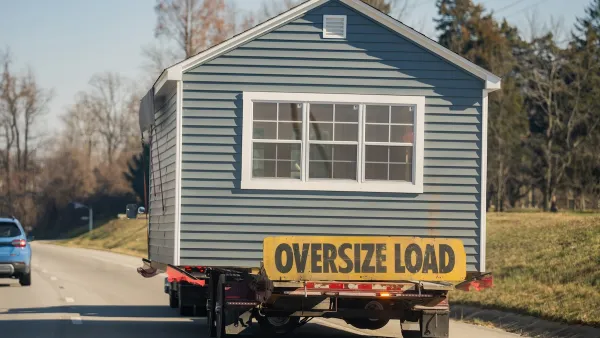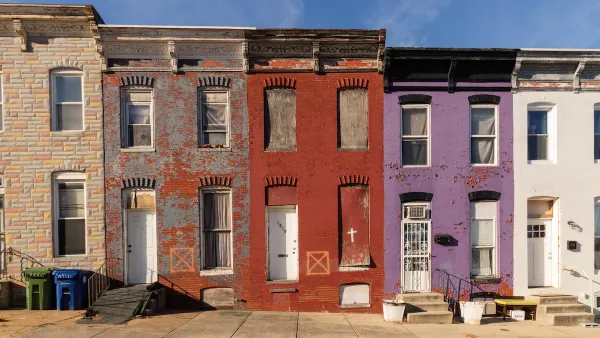Sara Robinson explains how the historical view of American homeownership -- that of a life-long commitment to place and "housey goodness" with no expectation of financial gain -- may be coming back.
Writing for Alternet, Robinson reminds us that the perception of the house as an investment is a recent one. Instead, previous generations of homeowners chose their houses for the long-term purpose of raising a family and becoming settled in a neighborhood. Now observers of the American housing market are noting that this view is making a comeback:
"Historically, most generations of Americans have expected to get back out of their houses no more and no less than exactly what they put into them. And even at that, they thought it was still a deal very much worth making. [But] by the mid-'80s, the old expectation that a middle-class life would be defined by one job and one house had almost completely given way to a new, harder-edged view. A house wasn't anything to get emotional or romantic about, let alone to commit your life to. Beyond a certain point, you didn't make the place pretty or comfortable for yourself; rather, you focused on the improvements (an updated kitchen, a new deck) that would increase your profit at the next sale. It was just a financial instrument you bought, hung onto for a while while it appreciated, and then sold at a hefty profit so you could move on to something better.
[Now] there are signs that the deep expectations and motivations of American homebuyers are changing. The economic crash has created some deep ontological shifts in how we value homes and home ownership. The early signals are starting to suggest that we're on a return trip back to a much older American tradition of home ownership – one that assessed a home's primary value not on the basis of its price on the open market, but for what it offered intrinsically to families in terms of security, stability and self-sufficiency."
FULL STORY: How Homeownership Has Changed in America And Why You Shouldn't Give Up on Buying

Analysis: Cybertruck Fatality Rate Far Exceeds That of Ford Pinto
The Tesla Cybertruck was recalled seven times last year.

National Parks Layoffs Will Cause Communities to Lose Billions
Thousands of essential park workers were laid off this week, just before the busy spring break season.

Retro-silient?: America’s First “Eco-burb,” The Woodlands Turns 50
A master-planned community north of Houston offers lessons on green infrastructure and resilient design, but falls short of its founder’s lofty affordability and walkability goals.

Test News Post 1
This is a summary

Analysis: Cybertruck Fatality Rate Far Exceeds That of Ford Pinto
The Tesla Cybertruck was recalled seven times last year.

Test News Headline 46
Test for the image on the front page.
Urban Design for Planners 1: Software Tools
This six-course series explores essential urban design concepts using open source software and equips planners with the tools they need to participate fully in the urban design process.
Planning for Universal Design
Learn the tools for implementing Universal Design in planning regulations.
EMC Planning Group, Inc.
Planetizen
Planetizen
Mpact (formerly Rail~Volution)
Great Falls Development Authority, Inc.
HUDs Office of Policy Development and Research
NYU Wagner Graduate School of Public Service




























